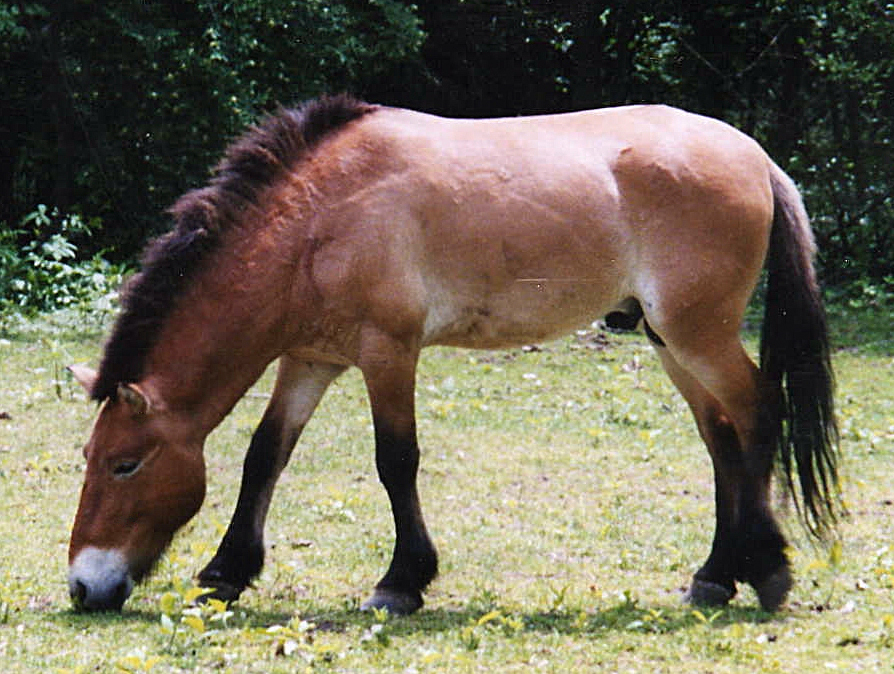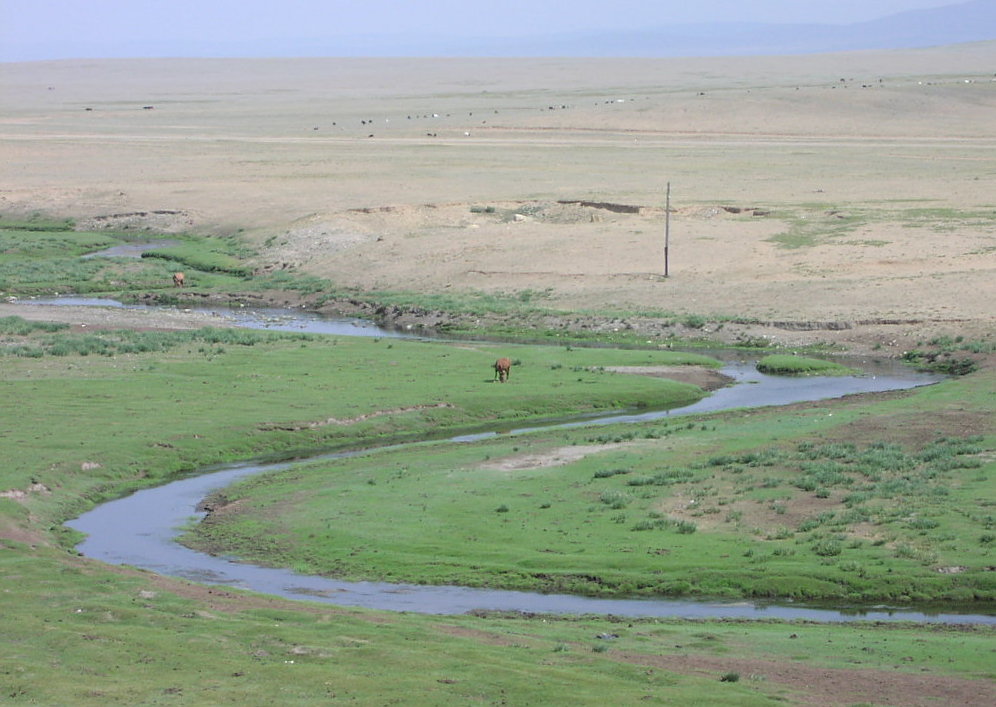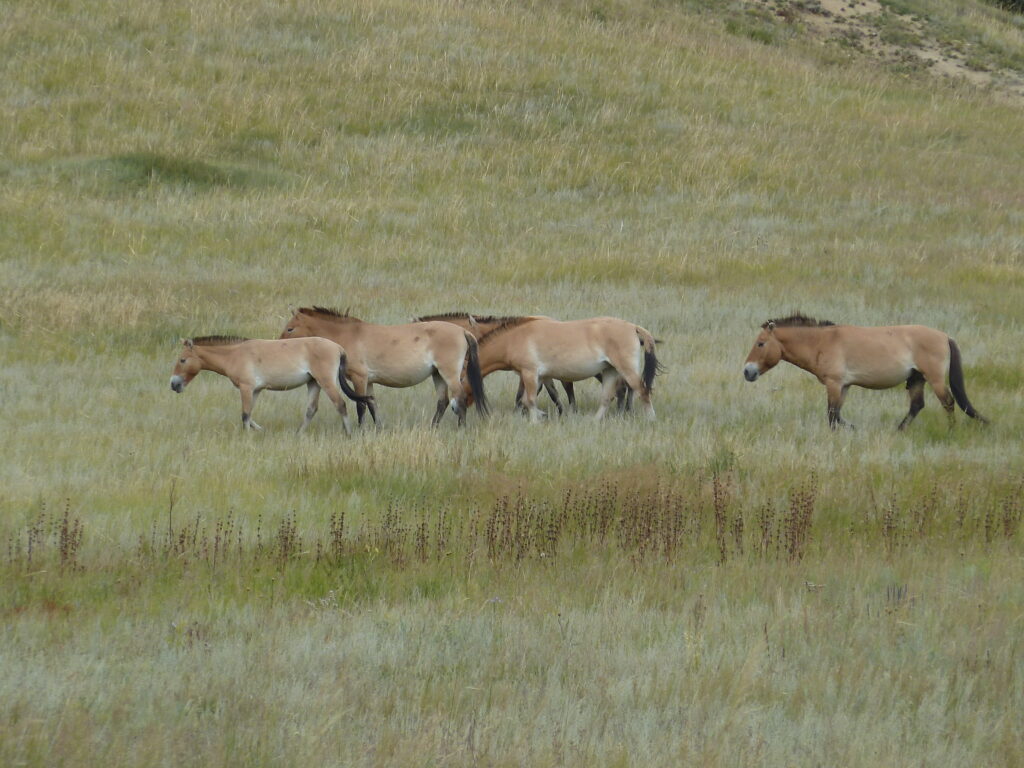On July 27, 2013, a mare of the endangered Przewalski’s horse bore the first foal produced by artificial insemination. The young female was born at the Smithsonian Institution’s Conservation Biology Institute in Front Royal, Virginia.

Przewalski’s horse (Equus ferus) is the only truly wild horse species left in the world. It is native to the vast open steppes of Mongolia, China and Russia. It is smaller than domestic horses, standing about 5 feet high at the withers, and weighing 400-600 pounds at maturity. It is stockier than domestic horses, with short legs and neck. Coloration is generally light brown, with dark brown lower legs and dark main and tail, which is sheds annually. It has a double set of chromosomes which prevent effective hybridization with domestic horses. Consequently, the species has remained distinct and was never domesticated. Occasional specimens kept in captivity were considered great treasures in ancient times.
The species declined throughout the 19th and early 20th Centuries, owing to hunting, competition with domestic livestock and being forced into marginal arid habitats with insufficient water sources. Collecting for zoos also damaged the populations, as the species became a prized zoo animal over the past century. IUCN declared the species “extinct in the wild” up until 1996.

Collecting for zoos turned out to be the savior for the species. About 1300 individuals exist in zoos around the world, with their genetics and other characteristics now carefully analyzed and monitored. All horses in zoos share the same 14 ancestors, leading to concerns for loss of genetic diversity. The Prague Zoo, in the Czech Republic, manages the official database on Przewalski’s horse genetics and has bred more than 200 foals since the 1950s.
With the success of captive breeding, populations were reintroduced into China and Mongolia started in the late 1980s. Reintroductions have been successful, with now about 150 horses living freely in several small populations in its normal range.

A huge new step in the recovery of the species occurred with the birth of the first foal fertilized by artificial insemination in 2013. Artificial insemination is important because it allows pregnancies to be initiated without needing to transport adult animals across long distances. It also allows strategic crosses between genetically dissimilar males and females, enhancing the overall genetic diversity of the captive and, eventually, wild populations.
Whereas artificial insemination is a standard practice for domestic horses, it required much research and practice before working for the wild Przewalski’s horse. Females needed to be trained to allow repeated collection of urine so that both pre- and post-fertilization condition could be assessed. Techniques also needed to be established to assure the successful collection and placement of male sperm. The successful insemination and birth was finally achieved by horses and veterinarians at the Smithsonian’s conservation center in the Blue Ridge Mountains of Virginia.
References:
IUCN Red List. Equus ferus ssp. Przeswalskii. Available at: http://www.iucnredlist.org/details/full/7961/0. Accessed July 28, 2017.
Prague Zoo. Return of the Przewalski’s Horse to Mongolia. Available at: https://www.zoopraha.cz/en/animals/we-help-them-to-survive/projects/7678-return-of-the-przewalski-s-horse-to-mongolia, Accessed July 28, 2017.
San Diego Zoo Global. 2008. Przewalski’s Horse, Equus ferus przewalski. Available at: http://library.sandiegozoo.org/factsheets/przewalski_horse/equus.htm. Accessed July 28, 2017.
Shenk, Emily. 2013. First Przewalski’s Horse Born Via Artificial Insemination. National Geographic, August 6, 2013. Available at: http://news.nationalgeographic.com/news/2013/13/130805-przewalski-horse-born-artificial-insemination-animal-science/. Accessed July 28, 2017.
Williams, Paige. 2016. The Remarkable Comeback of Przewalski’s Horse. Smithsonian.com, December 2016. Available at: http://www.smithsonianmag.com/science-nature/remarkable-comeback-przewalski-horse-180961142/. Accessed July 28, 2017.
